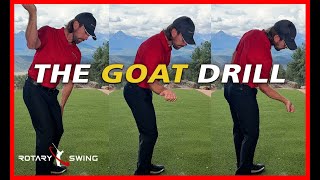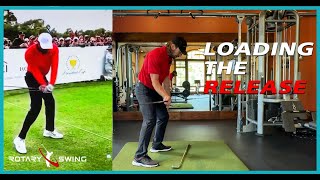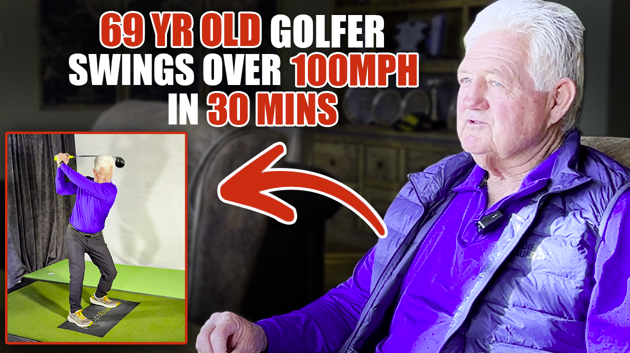HOW TO SET UP FOR THE DRIVER
"Should you set up the same for all the clubs in the bag?" is a question I get all the time. The answer is absolutely; you don't want 13 different golf swings! So, if you want to learn how to swing a driver and not have 12 other golf swings, read on!
But, when it comes to the driver, certain setup changes can and should be made when seeking to maximize distance off the tee.
I go into great detail on these changes in my "Bomb Your Driver Series" that is applicable to any golf swing. But for RST, we have some specific things we want to focus on.
Golf equipment has changed dramatically over the past 10 years and no club more so than the driver. Because of these changes, it is critical that you understand how these affect how you should set up to the ball so you can get the most out of modern technology and learn how to swing a driver correctly.
"Great video on a very important topic."
-Gøran S. | Dec 13, 2012 | 1 HDCP
If you swing the club exactly the same for every club in the bag, your release point at impact would be in virtually the exact same spot. However, this would give you a descending blow with the driver.
This begs the question: Do you want a descending blow with the driver?
HOW DO TOUR PROS HIT THEIR DRIVERS?
The answer - it depends!
While most amateurs are seeking to get as much distance off the tee as possible, with better golfers, that's not always the case.
In fact, most PGA Tour pros actually hit down on the all about 1.3 degrees.
This is because it's much easier to control this impact position, as it's very similar to the impact position for all their clubs, and no radical changes to path or spine angle are required to hit the ball solidly.
On the other hand, amateurs tend to tee the ball way forward in their stances, three inches off the ground, and swing up on it a ridiculous amount and hope they hit it solidly. As is evidenced by your local driving range, this rarely works out!
TEE IT HIGH AND LET IT FLY???
You do this because you've heard on TV or read in the golf magazines that you should swing up on the ball.
That is a very dangerous statement as you should NEVER swing "up" on the ball.
You should always swing down and allow the differences in the setup to "collect" the ball on the upswing. Swinging "up" on the ball leads to hitting a lot of shots low on the club face, inconsistent contact and sore backs.
GOLF DRIVER SETUP HOW-TO FOR THE RST DRIVER SWING
In the image at the top of the article, you probably noticed that Tiger appears to have the ball very far back in his stance.
However, if we draw a line down from the left side of his head, we can see that the ball is in the same position he uses for all his shots and is advocated by RST fundamentals.
The place where most golfers go wrong is that they don't set up with any axis tilt. If Tiger had no axis tilt, his head would be in front of the ball, and he would have a hard time getting this ball up in the air, as he would end up hitting down on the ball very severely.
Setting up with axis tilt and having the ball farther back in the stance allows you to still have a positive angle of attack without having the ball so far forward in your stance that you have to alter your swing by losing axis tilt and swaying forward in the downswing.
So, believe it or not, Tiger's setup position here is actually great for the driver for a neutral-ish angle of attack.
But what if you really want to bomb one and create a very positive angle of attack? Should you just move it way forward?
In this Premium video, I show you the basic RST driver setup ball position and the one critical adjustment you must make to the ball position to hit it solidly when you're trying to launch the ball higher for maximum distance.
Click the button below to start watching now!
Video Transcription: RST Driver Setup Adjustments
A lot of golfers ask whether they should use the same swing for every club in the bag, and the answer is yes, absolutely. You don't want to learn 12 different golf swings!
There's just one exception, and that's the driver. The driver has changed dramatically in its design, especially over the last 10 years. In addition, we now have tools like launch monitors that allow us to observe and measure how setting up correctly and using our clubs the way they're designed to be used can get you a lot more distance.
Optimizing for the driver will require a few adjustments to your golf swing. The reason we recommend using the same swing with every club in the first place is to get a uniform release point so your swing always feels exactly the same. The drawback to this is that it doesn't optimize for today's drivers, so you won't be hitting as far as you possibly can in that one situation.
Is That Necessarily a Bad Thing?
If you look at the Tour average, the pros tend to hit down about 1.3 degrees. They have a negative angle of attack of over a degree, and we all know that if you want to hit the ball as far as you can, you want to catch it slightly on the upswing.
The numbers will vary a bit depending on your swing speed, but typically a few degrees is enough to get you quite a bit more yardage, getting the ball to fly a little farther and achieve a little more distance, overall.
So then why do the Tour pros hit down on the ball when they know they could be hitting it farther?
Their reason is the same as what we've been teaching you; to get the release at the same point every single time, for consistency. The pros have enough speed to give up a little distance for the sake of accuracy and consistency.
Optimizing For Distance
Of course there are times when you want to hit the ball that little bit farther. You need the extra yardage to carry a bunker or a hazard, to land softer and fly a little bit higher, to take advantage of some wind to get to a long par 5, etc.
Those are times when you can make some adjustments, and that's what we're going to discuss here.
The yellow ball in the photos shows how you would set up for a normal stock shot. You will be hitting down on that yellow ball a little bit - sacrificing some distance for the sake of consistency.
We can move the ball just a hair forward to remove some of that negative angle; with the irons, you may be fiver or six degrees down. Moving the ball slightly forward - say half a ball-width for a stock shot - will help some, but it won't make a dramatic difference.
As you come into impact with that yellow ball, your face should still be squared up.
The white ball is placed about six inches in front of the yellow one. This placement will allow you to hit the ball higher using the driver.
The yellow rod represents the alignment line. You can see that if you hit the white ball from your normal stance, by the time the club gets to impact the face will be slightly shut and the ball will go left of your target line.
The club swings on an arc, so by the time it gets to the white ball six inches in front of normal setup position, it's already working back to the left and shutting down. The club face is closed.
A Logical Solution
With the ball up that far, it's going to be a pull, but sometimes you still need that shot. What do you do if you want to hit the ball really high and get some more carry out of it?
Let's look at it logically. To hit the ball square, you have to move it up several inches, to where the white ball is, but how do you adjust for that so the ball will launch on the target line?
The answer is simply that you need to close your setup just a little bit. This will allow you to get a positive angle of attack so the ball will follow the target line. The shot is a pull with your normal stance, so you will close your stance as shown in the photo. Now you're set up so that the club face is squared up with the white ball.
You're just going to adjust your setup by a few degrees; enough that the club face matches the alignment at the point where you're releasing.
This will get the ball to launch a little bit higher and create a more positive angle of attack. You move the ball up, then you close your stance slightly to compensate. In relation to where you're swinging, the club face will be square to your alignment at impact, but shut in relation to your body, where the ball is at impact.
When you shut your setup slightly, the ball will come off square to your target line, helping you achieve a more positive angle of attack and get a little bit more carry out of it.
Don't Give Up Your Normal Swing!
It's still very important that you continue practicing standard shots with the driver, hitting a lot of drives from the normal ball position. They're going to fly very low in relation to the adjusted swing we've just discussed, but it's important to teach yourself how to release the club at the same point with every club, so you develop a consistent release point.
That's how you will learn to hit the ball straight with every club in the bag. The driver is going to fly low; you might take a little bit of a divot with the driver when you're practicing this, and that's perfectly OK.
We have a lot of our Tour players do this intentionally, because otherwise we see them starting to create a lot of secondary axis tilt try to get a really positive angle of attack. We have to fix that, so we have them work on staying tall and hitting down a little bit so the driver releases just like the 3 wood or 3 iron or pitching wedge would.
Once they've got that zeroed out and everything's squared up, the ball's coming out low but on line, then we make little setup adjustments to allow them to create a positive angle of attack without trying to get their spine leaned way back at impact.
You want to use your body in the same way for every club in the bag, but you can change your setup just a little bit to help you hit the driver farther when you need it. Still, you should continue to practice hitting it square every time with your normal setup, to you get that consistent release.
Watch part 2 now to see how you're moving your body in the opposite direction of the pros!

































































































































































































































































































































































































































































































